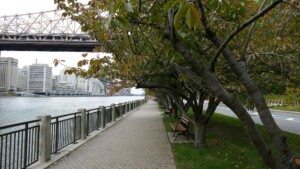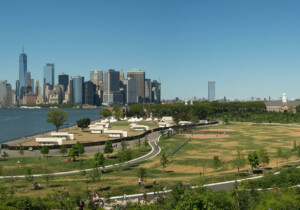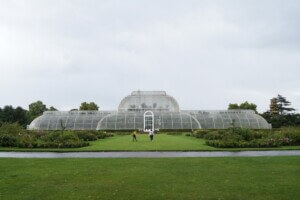How do you make waterfront locations resilient to the problems caused by climate change? How can you support communities to manage—and come to terms with—flood risk? As governments and developers reverse their thinking around the land value adjacent to our global rivers and harbors, these challenges are shifting urban design in new and exciting ways.
The Rockefeller Foundation sponsored recent resilience-focused work in the San Francisco Bay Area, an area that typifies the challenges faced by many cities and communities around the world, with low-lying shoreline around the Bay isolated by misplaced freeway infrastructure, and communities economically depressed due to decommissioned industries and the loss of jobs.
These communities face the dual threats of sea-level rise at the shore-edge and increased stormwater flooding from the uplands, with the additional environmental risk of earthquakes and the liquefaction of historical landfill.
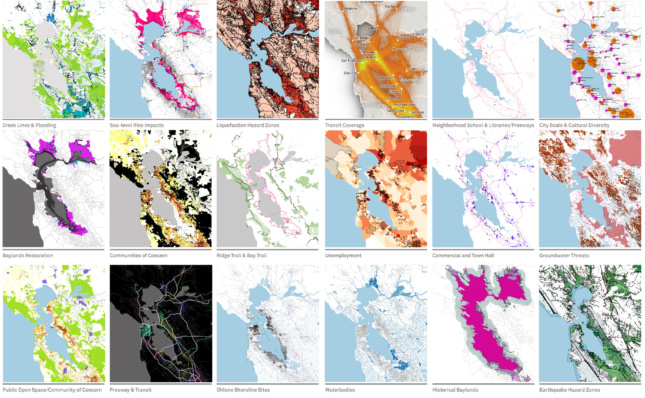
The Resilient by Design project asked a team of local, national, and international design experts to search for replicable solutions to make communities more resilient to these dynamic threats, all of which are expected to intensify dramatically, in both the immediate and long-term future.
The project involved extensive data analysis of climate change vulnerability, as well as multidisciplinary prototyping of solutions for adapting vulnerable sites and communities, significantly pushing creative thinking in this burgeoning area of landscape architecture and urban design.
One of the unanimous observations to come from the project was that traditional engineering protections and hard-edged solutions are not practical in solving these complex challenges—as many San Francisco Bay Area shoreline communities have already witnessed. As an example, embankments designed to offer protection from rising sea levels have resulted in trapping stormwater from the land-side of the Bay, in itself causing flooding, and posing the complex challenge of pumping stormwater out to sea.
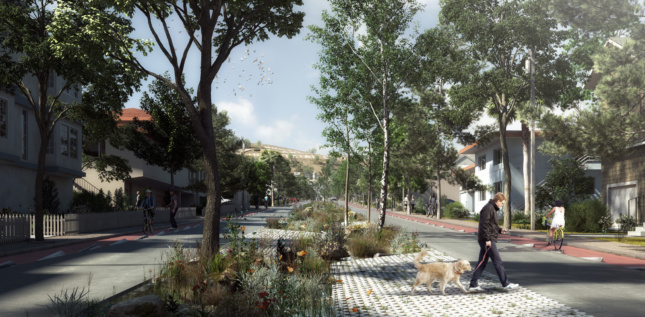
The main flaw, identified by designers and communities alike, that comes from focusing on hard solutions, is that, by nature, they are fearful and defensive, and designed to function at their best in a worst-case scenario – in the case of the South Bay area this equates to a current probability of once every 200 years.
Instead, the Resilient by Design team concluded that the challenges called for the combined creativity, knowledge, and experience of residents and public officials, along with collaborative working between landscape architects and urban designers. This in itself pushed a new wave of thinking into an area of the built environment where engineering has traditionally led the design process, bringing to the fore a social dimension to problem-solving.
Before it had become known as the Bay Area’s ‘industrial city’, South San Francisco was the kind of place where people could walk the length of the creek to swim in the bay; a connection to the water that has been lost over the last half-century. A key focus for the project was on re-establishing this connection; making the South Bay waterfront an attractive and accessible part of daily life.
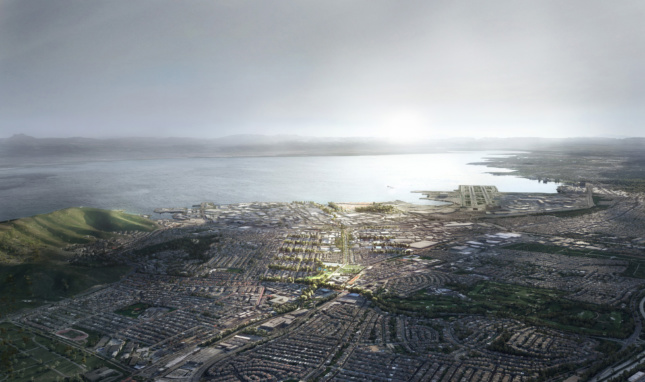
Through extensive community engagement, research, and an inclusive design process that involved transforming a disused bank into a community design hub and establishing social media channels to share images and ideas, the design team for the project, Hassell+, mapped out a range of ways to make South City stronger. These included making it easier to reach and enjoy the local creek and bay; reducing the impact of flooding; building resilience to sea-level rise; returning native flora and fauna to the area; and making a healthy, active life near the water easier to imagine and achieve.
The team drew on international precedents for waterfront adaptation and urban expansion. In smaller Chinese cities on the Yangtze River, communities construct riverbank pavilions for the dry season, then carefully deconstruct for the wet season each year. In Indonesia there are villages where residents have learned to accept—and adapt to—the fact that floods turn the streets into the canals for part of the year.
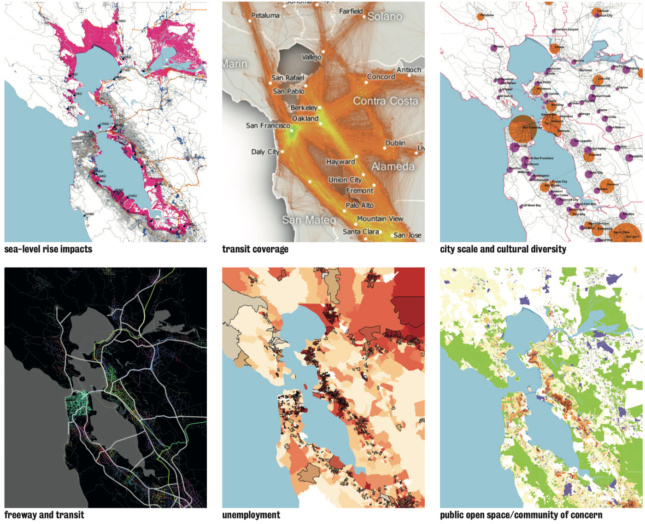
In my hometown of Newcastle, Australia, our suburban rugby parks are designed as additional capacity for stormwater within the low-lying areas, with big rains bringing stormwater onto the fields from the surrounding streets and canceling the weekend games every few weeks.
There’s immense potential for designing for climate change in these examples of nature and culture sharing space, and it was this last example that led the Hassell+ collective to its multi-benefit proposition for waterfront communities around San Francisco Bay.
The resulting overarching South City strategy—named Collect & Connect—proposes a resilient, responsive network where creeks and streets could be redesigned as green linear corridors for water management and community gathering, transforming the regional structure from a vulnerable loop into a connected resilient network, enabling better disaster response and water management, but also contributing to greater liveability and connectedness across the community-at-large.
Open green inundation areas double up as an early flood warning strategy, giving visible signs to the community that floodwaters are rising. Public open space is planted with local species to support the biodiversity needed to create native landscapes that are more resilient to extreme weather. Spaces for events such as markets and sports support communities to live social, healthy lifestyles.
Finally, the project highlights the importance of public open space in allowing communities to gather, organize, and rebuild in times of disaster, becoming centers of shelter, or even temporary hospitals and schools.
Other highlights of the Resilient South City proposal include:
— A wider, greener creek, to manage flooding and create the right conditions for a sequence of new parks
— A South City Circle Bridge, serving as a walking and cycling gateway to all
transport modes
— An ‘eco waterpark’ at a revamped water plant, to become a teaching tool and natural shoreline swimming pool
— A native plant nursery, to help control flooding and treat run-off from the
nearby highway
— A ‘living levee’, to form a wetland for restoring habitat and hold stormwater in extreme high tides
— Schools located on higher ground, to become hubs for water treatment and community recreation
Ultimately, the Bay Area Resilient by Design Challenge has served as a call-to-action for the region to continue to work together and move the cause forward. It is hoped that as a project exemplar it will aid and inspire others working on practical master plans to support people and environments in waterside communities through a flexible and dynamic network of public spaces—that recognize the impacts of climate as one of the key ‘users’ of public space.
This article appeared in the Spring 2020 issue of Citizen, a new magazine for everybody engaged in shaping the city, published by the London School of Architecture. The issue is available to read for free at citizen-mag.org








